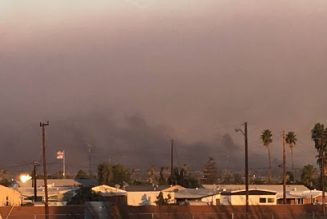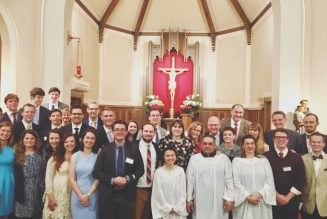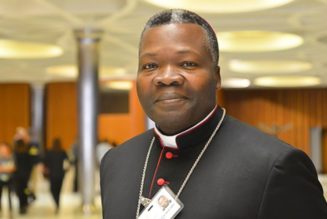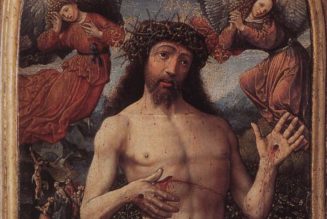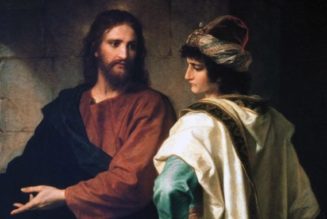It’s a dilemma, isn’t it?
You have to wonder if anyone ever really thought this through.
Let’s look at this.
Let’s consider the concrete, material reality of Catholic life before, say 1965.
What aspects of this life are permissible for the 2021 Catholic to access and incorporate into her practice? What’s permissible to see, sing, listen to, contemplate, learn from, be formed by and pray with? Or, we can even consider – what of pre-1965 Catholic life is permissible for the world to value?
Well, we can look at the art, can’t we? That’s allowed. We can study the paintings, statues, icons and frescoes created by Catholics who worshipped in and were formed by the Catholic Mass before Vatican II. We can consider them in situ, or, of course, we can view them in museums. That’s always nice. Better light. We can write books about them and make educational videos about their symbolism, we can put them in our homes, these products of the pre-1965 Catholic experience. That’s fine.
Those pre-Vatican II Catholics produced a lot of music for the specific forms of liturgy in which they worshipped – that Mass, those monastic prayers, all in that old dead language they used. Yes, they wrote quite a bit of music for those specific liturgies in that language. A lot. You can still listen to it. Sure! You can listen to it the concert hall. You can study it in school, you can learn to sing and play it as an exercise, you can make a Spotify playlist and let the notes course pleasantly through your home or in your car on the way to the gym. And maybe – sometimes – you can listen to it church. Don’t get the wrong idea, though! Don’t forget to actively participate!
What about the churches? They’re pretty nice. Sure, you can see those – those structures built out of that specific sensibility for that specific way of celebrating Mass and conducting prayer. You know – that altar against the wall and all. You can study them, analyzed them. You can certainly tour them. And yes, if it’s open and active and not been sold to a local restaurateur or evangelical group – you can actually go to a Catholic Mass in that church, built in line with those ancient sensibilities about form and function.

Even….Oprah thinks they’re cool!
And sure!
You can say the prayers that emerged and evolved over the centuries. You can certainly have a devotion to those hundreds of saints who were formed in that pre-1965 Catholic culture, who spent their lives going to or celebrating that Mass and those other liturgical prayers, whose writings and insights took shape within that landscape.
And yes, you can study the theologians and spiritual writers, learn from them, analyze them and learn from them – these men and women formed in and by that liturgical and spiritual world, reflecting, explaining and contemplating it.
Of course you can do all that! That’s fine.
You may value these artifacts, you can kneel in those churches, you can be in communion with those saints, you can pray those prayers, you may learn from the theologians – you could do it all in one place, if you like. You could attend Mass in a medieval Cathedral on the feastday of medieval saint, listen to plainchant and a homily referring to St. Terea of Avila by a priest who might be using vessels fabricated before 1965 and might even pray in the same direction you’re facing, as used to be the norm. Before. Maybe there will be a bit of Latin in there, too. That’s fine….
…as long as it’s not…that Mass.
Because that’s off limits.
That would be a violation of…some spirit of something.
Now, one could say that there are parties that would, actually prefer that all the allowed activities should actually be relegated to the dustbin and are appalled by the resurgence, no matter how limited, of interest in expressions of pre-Vatican II Catholic sensibilities. We’ve seen that in action over the past decades, of course. But the fact is, as I’ve pointed out before, that pendulum is obstinate, and while my ancient generation did not, indeed, know much about this thing you call the rosary and did cheerfully gather about the altar singing Ray Repp songs and sharing the creeds we’d written in small groups, confident in this New Era and Moving Forward, that’s not the way it is any more.
That was the theme of this post, of course. As the Church attempted during the JPII and B16 papacies to put some pieces back together against a hermeneutic of rupture, well, it happened. Folks listened and responded and old books are being reprinted, Latin’s sort of back and people wonder about Rogation Days and Octaves and nuns in full habit are the norm – when there are nuns around at all – instead of the exception, as it was back in my day, Sonny.
Which of course brings us to the present panic (and it is a panic).
And to that very simple, but apparently fraught question.
Why can I pull from every aspect of pre-Vatican II tradition and even practice it, except…this?
Remember that whole “Most educated laity in the history of the Church?”
They’ve got….questions.
Join Our Telegram Group : Salvation & Prosperity


